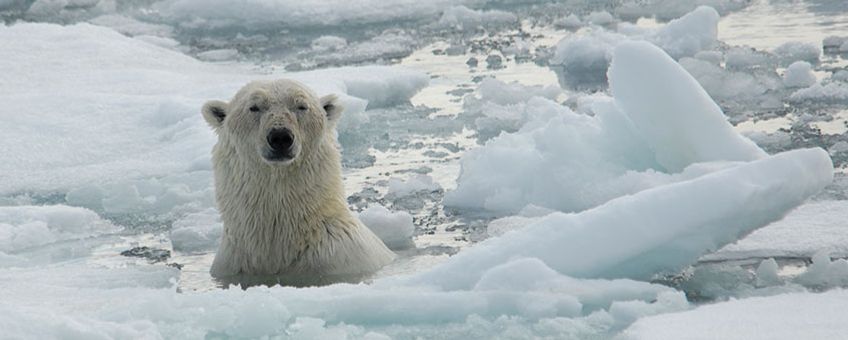
Polarised debate: polar bear blogs reveal dangerous gap between climate change facts and opinions
Netherlands Institute of Ecology (NIOO-KNAW)The study’s first author, NIOO-KNAW researcher Jeff Harvey says: “It’s time for scientists to counter the misinformation and engage directly with the public far more.”
Polar bears and retreating sea ice have become iconic symbols of the polarised climate change debate. By focusing on these icons, deniers of human caused global warming cast doubt among the public about the entire body of climate change knowledge. But a new study of the underlying science used in the debate could well melt down the trustworthiness of these deniers on social media.
No middle ground
“We found a major gap between the facts from scientific literature and the science based blogs on the one hand, and the opinions aired in climate change denying blogs on the other,” says the study’s initiator and first author, Jeff Harvey from the Netherlands Institute of Ecology (NIOO-KNAW). “It’s a very dangerous gap, as these blogs are read by millions.”
The researchers analysed 90 climate blogs in total, alongside 92 scientific papers on the subject. Although 45 ‘denier blogs’ claim to be based on science, they failed to overlap with the peer reviewed evidence in the papers. Instead, they relied mostly on other denier blogs. And eighty percent relied on one blog in particular, whose author, says Harvey, “had neither conducted any original research nor published any articles in the peer reviewed literature on polar bears.”
By contrast, 45 truly science based blogs do match the evidence in the scientific papers. And there’s not much middle ground.
Time to speak out
The team that studied the blogs was international and multidisciplinary, including ecologists, polar bear researchers, climate scientists, science communicators and psychologists of various ages and from six countries. Among the authors are well-known scientists such as Steven Amstrup from Polar Bears International, Eric Post from the University of California, Davis, and Michael Mann from Pennsylvania State University.
Their advice, as voiced by Harvey: “Scientists, climb down from your desk and start to counter the misinformation on social media directly – and via the traditional media as well. Engage with the public via the blogosphere or citizen science for example. And very importantly, adjust your focus to what is clear instead of all the uncertain things still to be studied.”
If the misinformation is successfully countered, the debate may be ‘depolarised’ while polar bears and other arctic wildlife still have a future to look forward to.
Determining credibility
-
Follow the data
Data trails of skeptics go cold quickly. -
Follow the money
Some prominent climate deniers are linked to think tanks that downplay human-caused climate change or receive direct funding from fossil-fuel companies. -
Follow the credentials
Scientists described as 'experts' on denier blogs often lack relevant expertise. -
Follow the language
Climate deniers often attack those with different views with insults, such as 'eco-fascists', 'fraudsters' or 'green terrorists', or by accusing them of being part of a global 'scam' or 'hoax'.
Text: NIOO-KNAW
Photo: Ian Sterling
